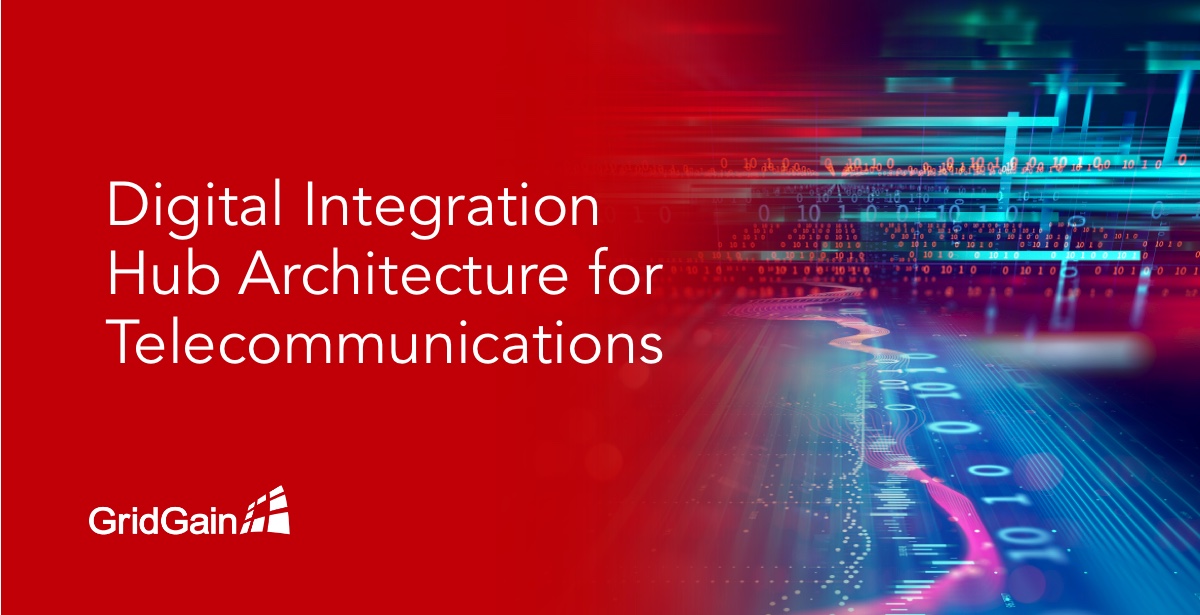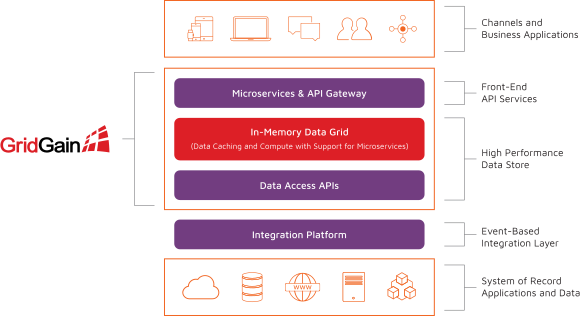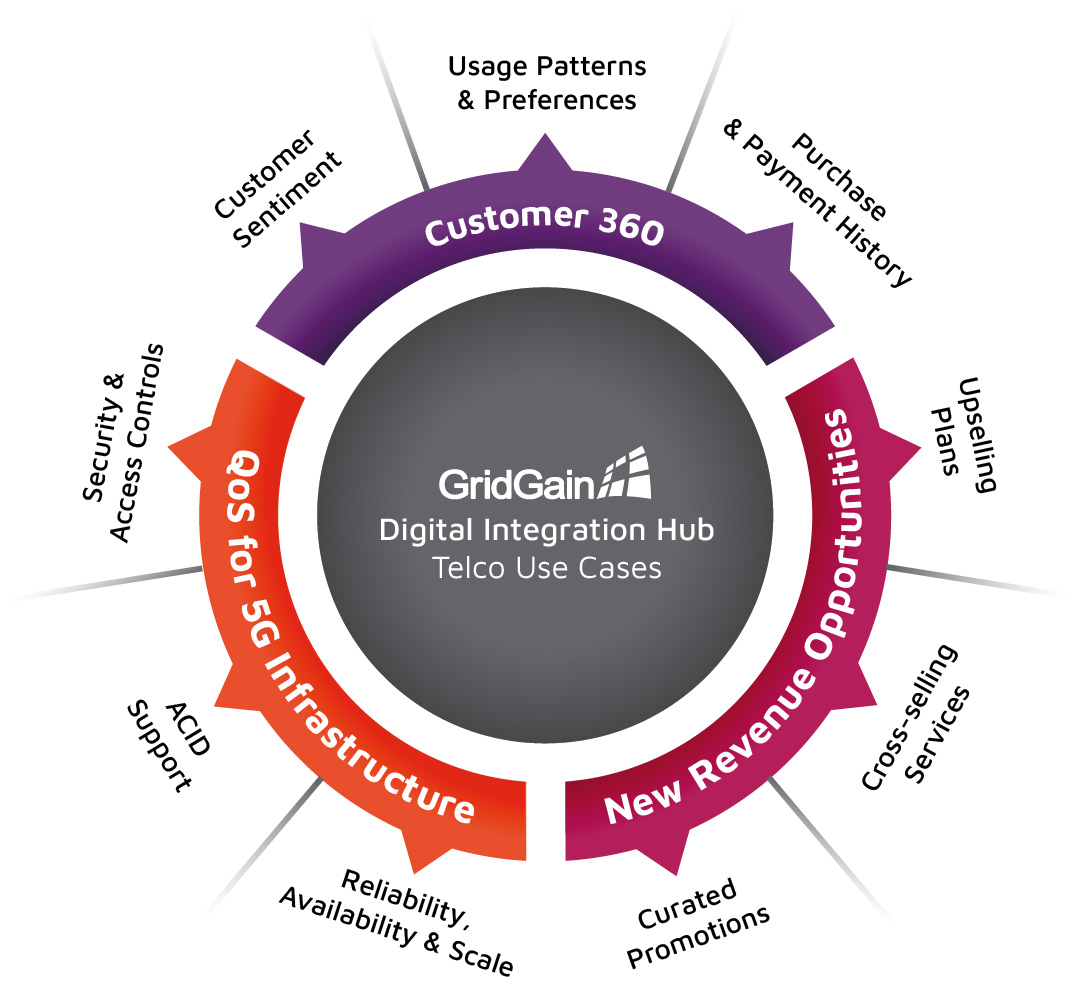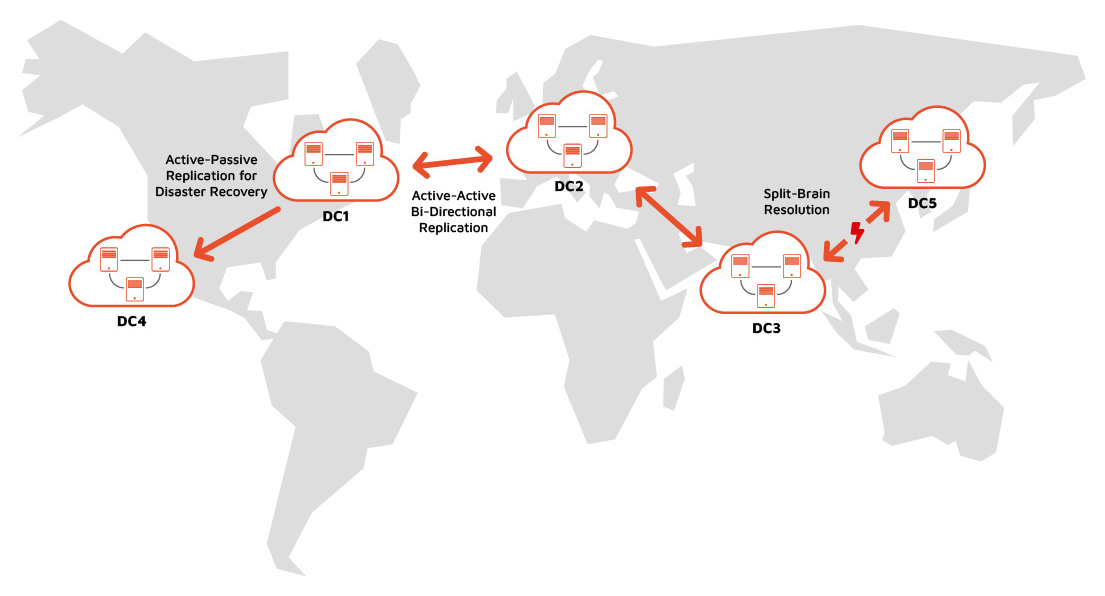
Telecommunication companies can transform their operations into data-driven enterprises by utilizing the Digital Integration Hub Architecture, which is built on GridGain's in-memory computing platform. In this blog post, we will explore how the Digital Integration Hub architecture can assist telecommunication companies in enhancing customer insights, creating additional revenue streams, and preparing for the 5G revolution. With its user-friendly implementation and seamless integration, this architecture provides an elegant solution for meeting the unique requirements of telecommunication companies without the need for extensive system replacements.

Digital Integration Hub Architecture
Background
We often hear that data is the new gold or oil, or whatever valuable asset you prefer. However, most companies have not yet established a data-driven organization. This is likely due to the difficulties involved in integrating data from various sources, including legacy and modern information storage systems, which may have different formats and access control requirements. To address this challenge, an increasing number of companies are embracing a Digital Integration Hub architecture, also referred to as a Smart Data Hub or Smart Operational Datastore.
Telco Digital Integration Hub Use Cases
Customer 360’ View
Bundled services have long been a common practice in the telecommunications industry. With market consolidation, providers offer a range of media connectivity and delivery services to consumers. These services include cellular services (data, calling, pre-paid options) as well as media delivered over broadband or other means (cable television, internet, phone lines, etc.). To provide optimal customer service, it is crucial to have a complete understanding of a customer's profile, service subscriptions, and consumption patterns.
However, telcos face a challenge due to the presence of numerous legacy systems. These systems, consisting mostly of packaged, monolithic COTS applications, severely restrict the accessibility and manipulation of data.
To address this challenge, GridGain's Data Integration Hub architecture is ideal for connecting and integrating legacy systems. GridGain leverages its ability to integrate with various data stores, change data capture technologies, and employ open APIs and standards-based communication protocols.

New Revenue Streams
By gaining a comprehensive 360-degree view of their customers, organizations can effectively leverage customer behavior. Telcos can predict demand patterns for individual customers and identify services that they are likely to be interested in. This capability opens up new revenue generation opportunities. For instance, telcos can offer promotional data refills and customized bundles to customers on "unhinged" pay-as-you-go data plans (where the customer is not tied to a contract and can switch anytime). Furthermore, telcos can use more advanced techniques, such as sending personalized coupons to nearby restaurants based on the time of day and location. With additional intelligence, telcos can even predict customers' food preferences and send them coupons that they are more likely to use.
While these use cases are not novel, the Digital Integration Hub architecture significantly simplifies their implementation. This architecture enables telcos to quickly access and aggregate customer data, applying real-time intelligence to it.
Quality of Service for 5G Networks
As the telecommunications industry transitions from 4G and 4GLTE to 5G, telcos require better management of stateful and stateless subscriber data. They need this data to be highly reliable and available, with varying access speeds depending on the telco's functional domain (ranging from microseconds to several seconds). This data management capability is crucial for supporting the quality of service requirements across the major 5G service classes (eMBB, mMTC, and uRLLC). A key element of the 5G architecture is the shared unstructured data store (UDSF), which provides services to access this data from various network functions (NFs).
Digital Integration Hub architectures can assist by providing a low-latency aggregation layer for data from multiple telco systems.
The Telco Data Problem Statement
The above three areas clearly demonstrate the need for disparate data at high speeds and scale. Although each of these three use cases presents a unique data problem, there are commonalities in terms of the availability, durability, and reliability of the data layer. Across these scenarios, we observe the following characteristics of the data:
- High availability, reliability, and ultra-low latency
- Variety of data types, structures, and profiles (static, transient, frequently accessed, frequently updated, real-time changes)
- Real-time intelligent decision-making and other complex computations
- ACID support
- Security and access controls
A data platform that fulfills these requirements should be able to:
- Unidirectionally integrate with different proprietary data stores as sources and retrieve data from them for initial loading or on an ongoing basis
- Bidirectionally integrate with various data stores for real-time reading and writing
- Provide diverse interfaces (both SQL and non-SQL based) and microservices to securely manipulate data within the platform
- Perform complex computational tasks
- Accomplish all of the above at immense speeds and scale
GridGain’s Digital Integration Hub
An in-memory computing platform allows you to efficiently load data into your computer's RAM from different sources using a set of user-friendly APIs. Once the data is loaded, the platform can perform a wide range of computational operations on it within the same memory space. This enables faster and more efficient data processing.

GridGain Digital Integration Hub Reference Architecture
The GridGain Digital Integration Hub architecture, which is built on top of the GridGain In-Memory Computing Platform, extends the concept of in-memory computing. This architecture provides additional enterprise-grade capabilities that are essential for mission-critical applications.
- High availability ensures that critical customer and operational 5G data is always accessible across the telco network, making it easy to retrieve when needed.
- Advanced security and role-based access controls ensure that only authorized personnel can access the information. This protects customer privacy and secures both data at rest and data in motion.
- ACID & ANSI SQL support offers critical data management functionality with the added benefits of high availability and scalability. GridGain's support for ANSI SQL allows companies to work with their existing legacy relational databases without the need for significant changes to their current applications.
- Hybrid analytical and transactional processing (HTAP or HOAP) reduces the need for large data movement across the network for analysis. This feature enables analytical processing on the same data layer that supports transactional processing. It eliminates the need for classic ETL processes between OLTP and OLAP systems.
- Support for training and execution of ML/AI algorithms enables the execution of complex AI models and facilitates real-time decision-making. This capability provides deeper customer insights and generates new revenue opportunities.
GridGain supports data access at various service level agreements (SLAs) and allows for unlimited scalability. This is achieved through its Transactional Persistence feature and the capability to horizontally distribute data across commodity hardware.

GridGain Supports Globally Distributed Telco Deployments
GridGain provides support for deployment across multiple geographically distributed data centers or cloud platforms, ensuring protection against network segmentation. This capability offers a high level of resiliency, availability, and scalability, making it ideal for telcos' data management use cases. We have successfully assisted Telco customers in meeting their unique requirements by implementing customized versions of this telco reference architecture. If you are facing similar use cases and data management challenges, please don't hesitate to contact us. We would be delighted to discuss how GridGain can assist your organization in moving closer to becoming a data-driven enterprise.
Related Resources
- Blog Post: In-Memory Computing and the 5G Ecosystem
- IMC Summit Talk: How Apache Ignite Powers Real-Time Subscriber Offers for a Leading Telco (presented by Teradata)
- Digital Integration Hub Overview
